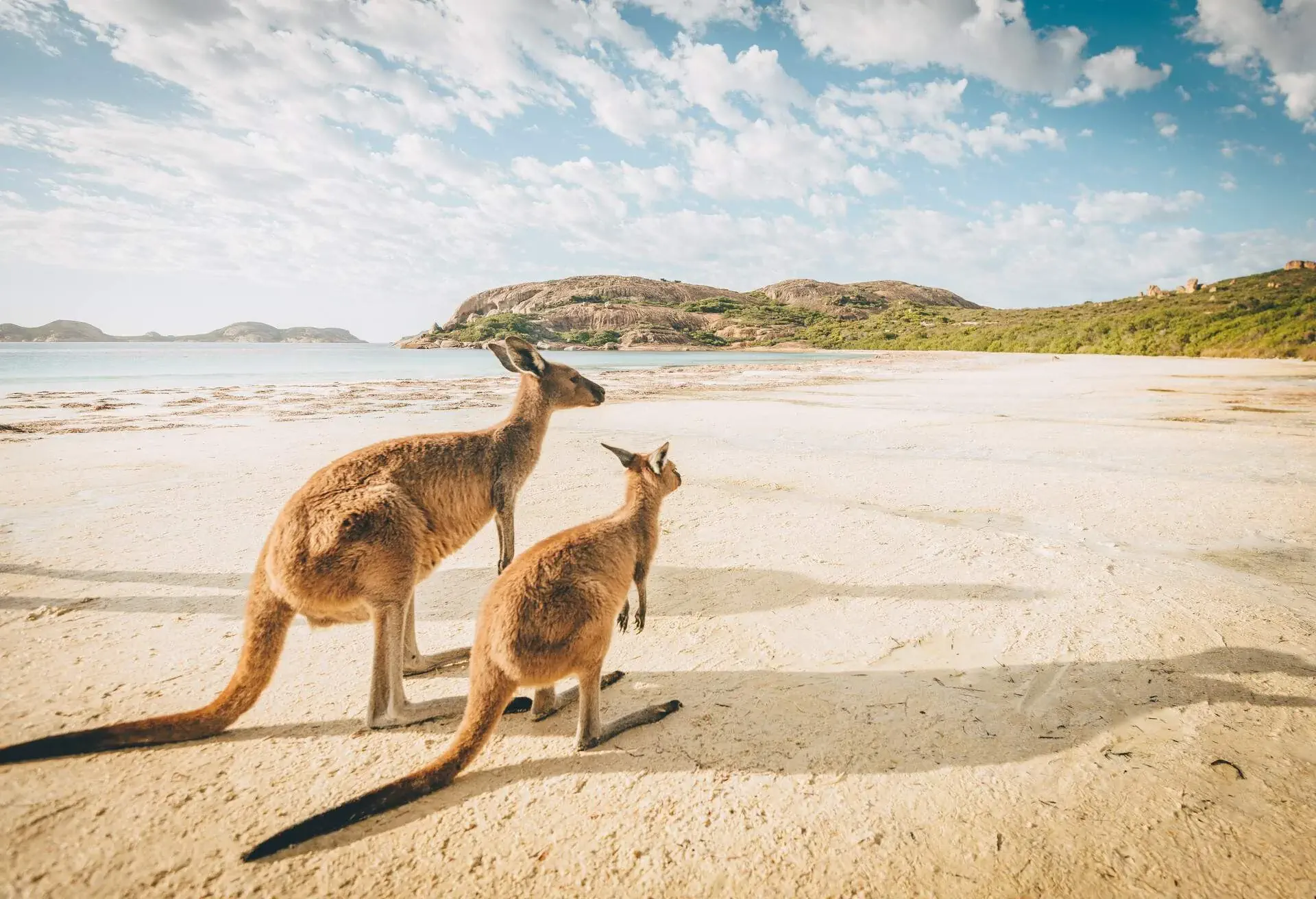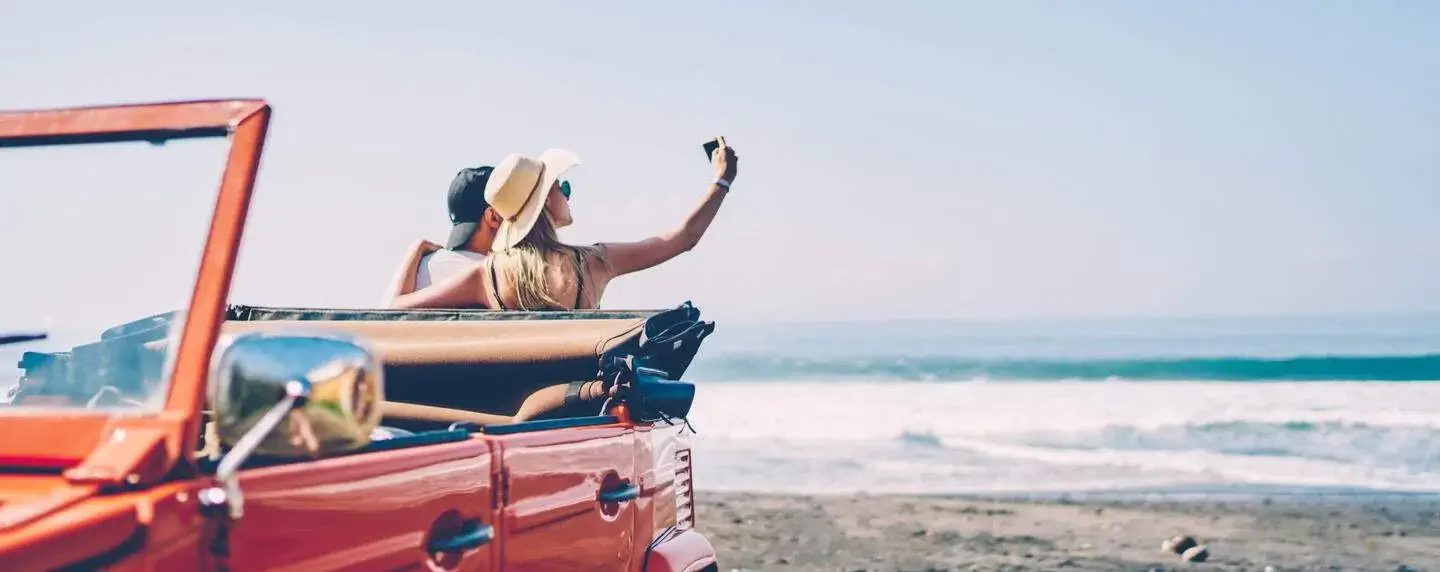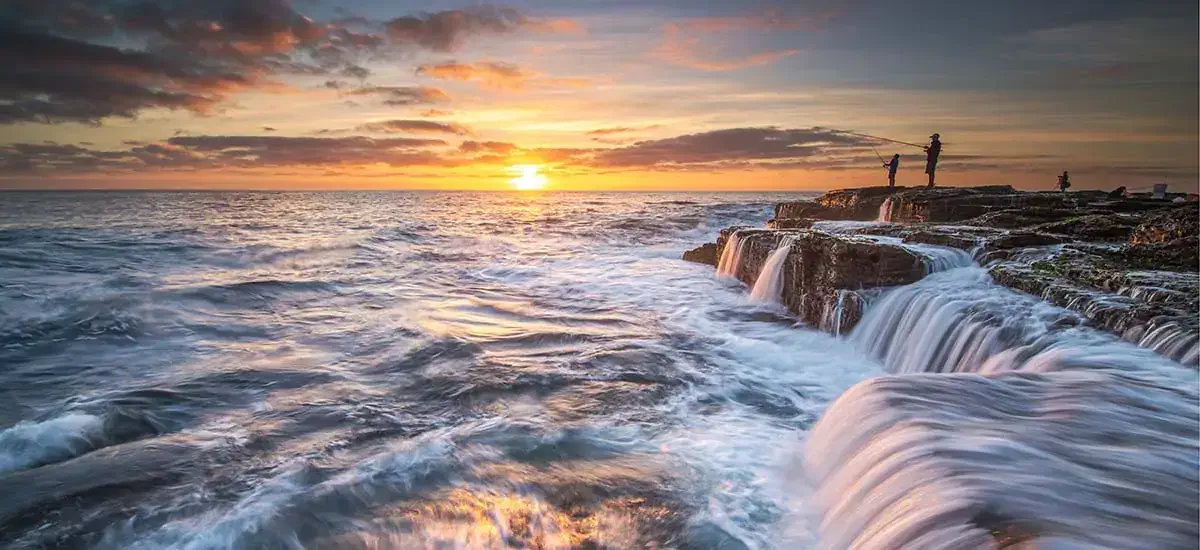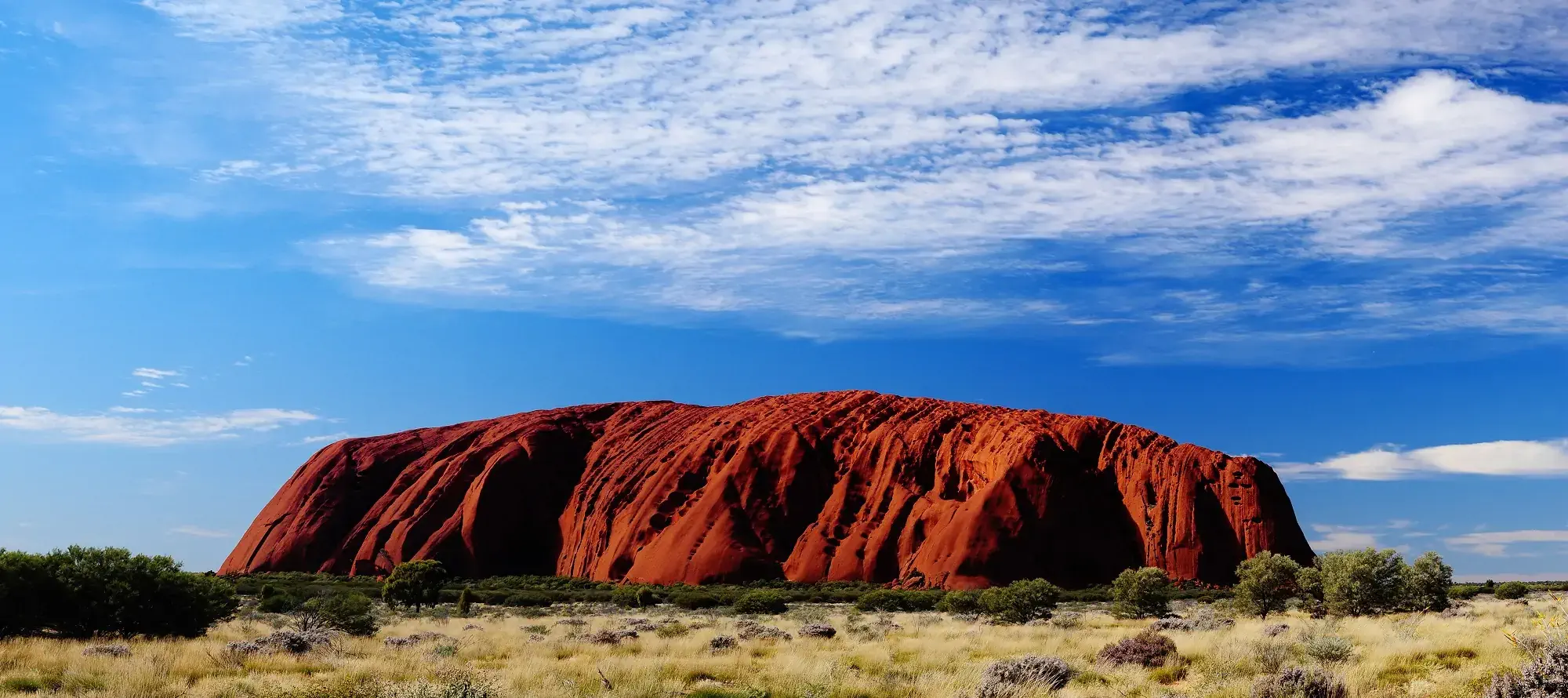One of the most common things to come up when talking about Australia is the number of animals that can kill you, most of which can only be found here. Many people believe this is because of the country’s separate land mass; migrating animals were never able to reach the island, while the animals in Australia were forced to develop ways of protecting themselves against the others isolated on the island with them. Whatever the reason, Australia is indeed home to some of the deadliest animals in the world, but it’s also home to some of the most adorable creatures, including over two-thirds of the world’s pouch-baby species (marsupials), koalas and dangerous but also adorable Tasmanian devils. Let’s have a look at some of the creatures you might come across in this stunning country and a few facts about Australian animals.
Dangerous Australian animals
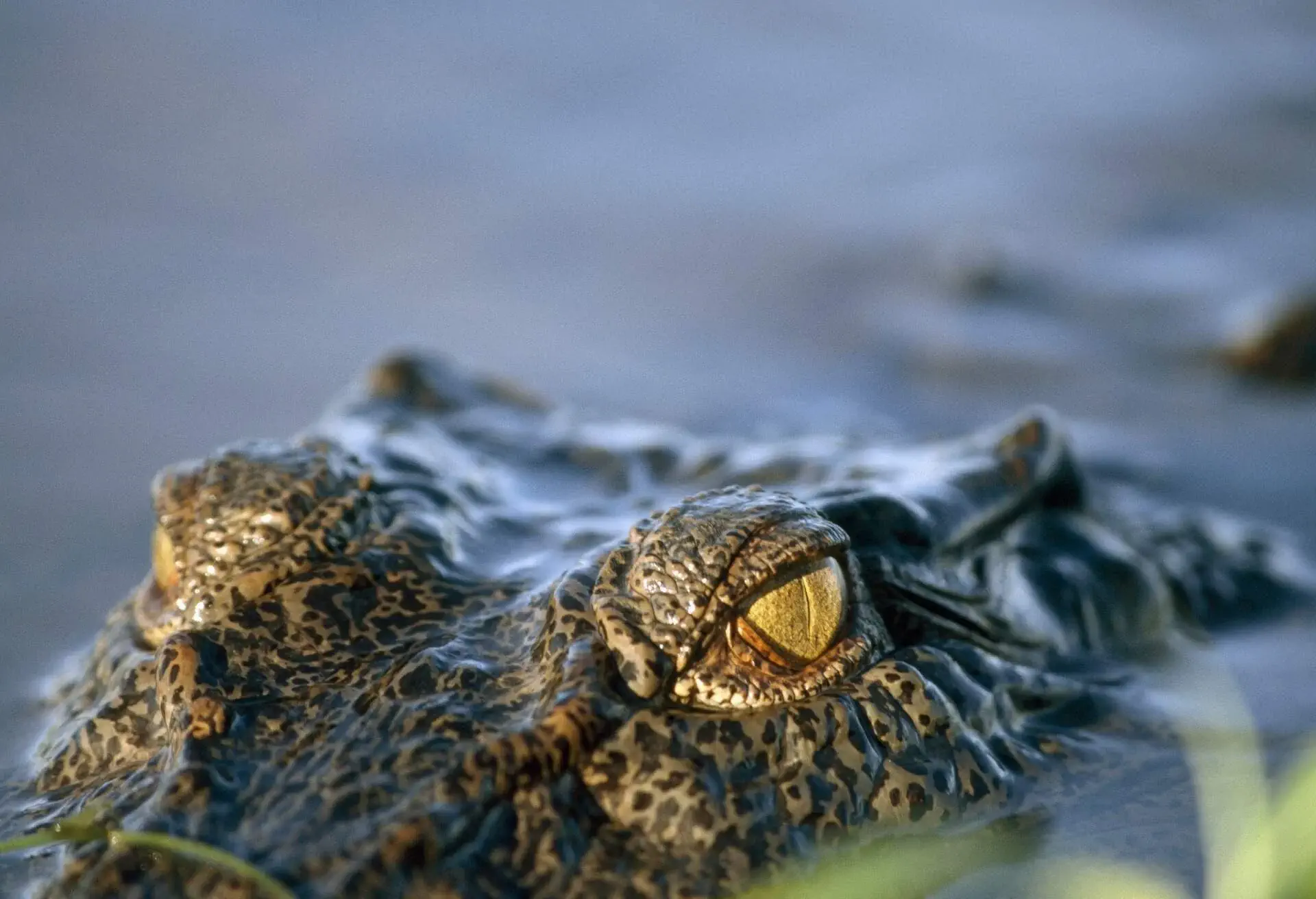
It’d be difficult to start a list of animals in Australia without putting the most sought-after information on the top: Australian wildlife one should be wary of, from the highly venomous to poisonous Australian animals. Well, here are a couple of creatures to look out for while hopping around Down Under.
Box jellyfish
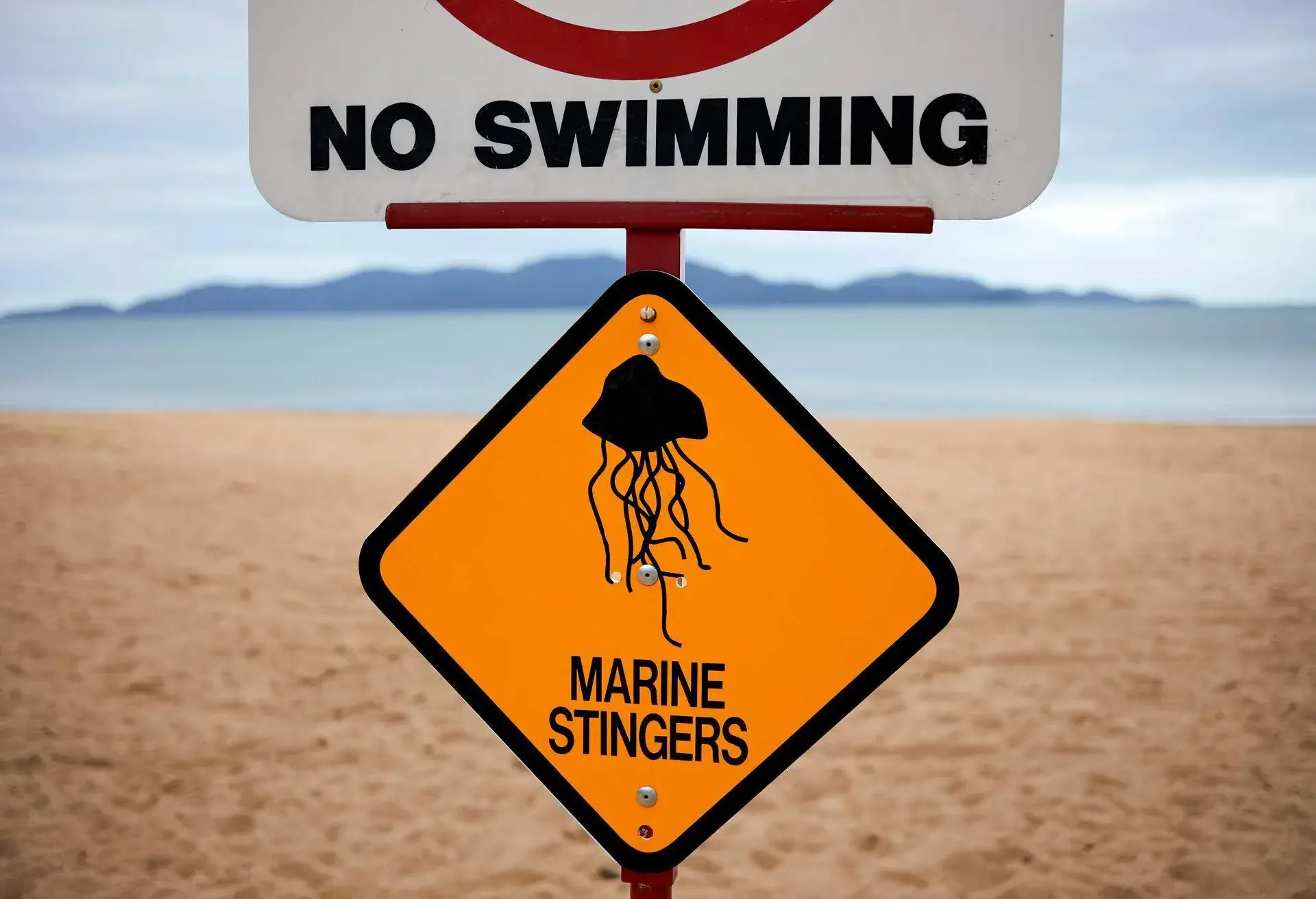
It might be surprising to many that the most lethal thing to humankind in Australia is a small, pale blue, transparent creature that floats in the water, but it’s true. The box jellyfish, otherwise known as a sea wasp or boxfish, has a 10/10 rating and is considered to be the most toxic animal on the planet. They’re typically found in Northern Australia and are most prevalent from October to May. The jellyfish sting is said to be searingly painful and affects the breathing, movement and nervous system of the victim, which can ultimately lead to death via cardiac arrest in mere minutes.
First responders in Queensland are trained to deal with these situations and offer various remedies and assistance on the beaches, including a handy bottle of vinegar, which is said to work better than urine (which can make the sting worse).
Blue-ringed octopus
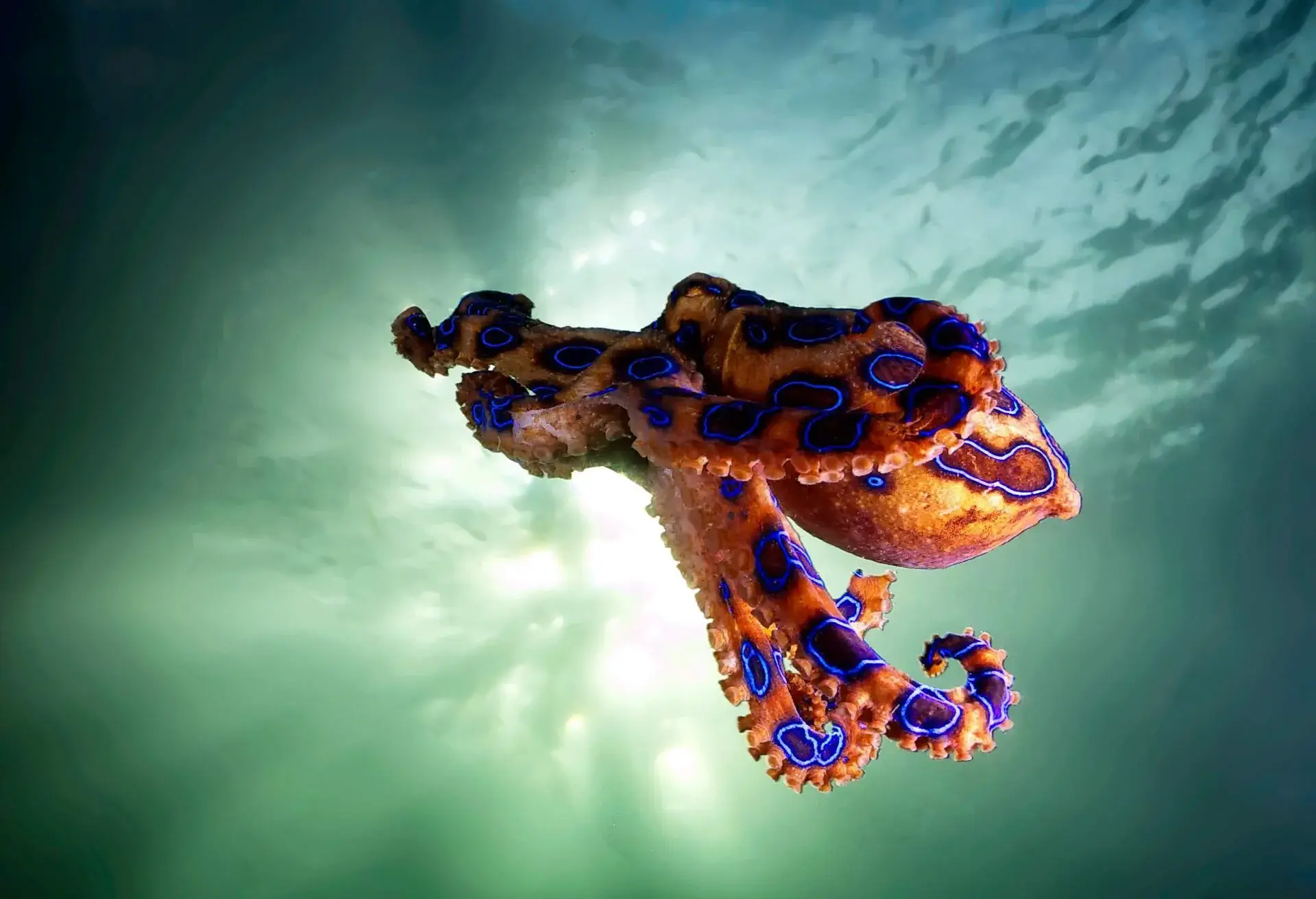
Native to the Pacific Ocean, the blue-ringed octopus is one of the most venomous Australian animals, despite its psychedelic colouring and miniature stature making it seem adorable rather than deadly. The venom of a blue-ringed octopus is said to be more than 1,000 times stronger than cyanide, and one octopus can kill more than 25 humans in mere minutes. They tend to hide in coral reefs, sandy tide pools or crevices, marine debris or shells.
If you find yourself face to face with this striking creature, keep calm and back away as quickly as you can. The bite is typically painless, so you may not be aware that you’ve been bitten. Luckily, the blue-ringed octopus is only known to bite when handled or cornered and there haven’t been any recorded deaths by this octopus since the 60s.
Saltwater crocodile
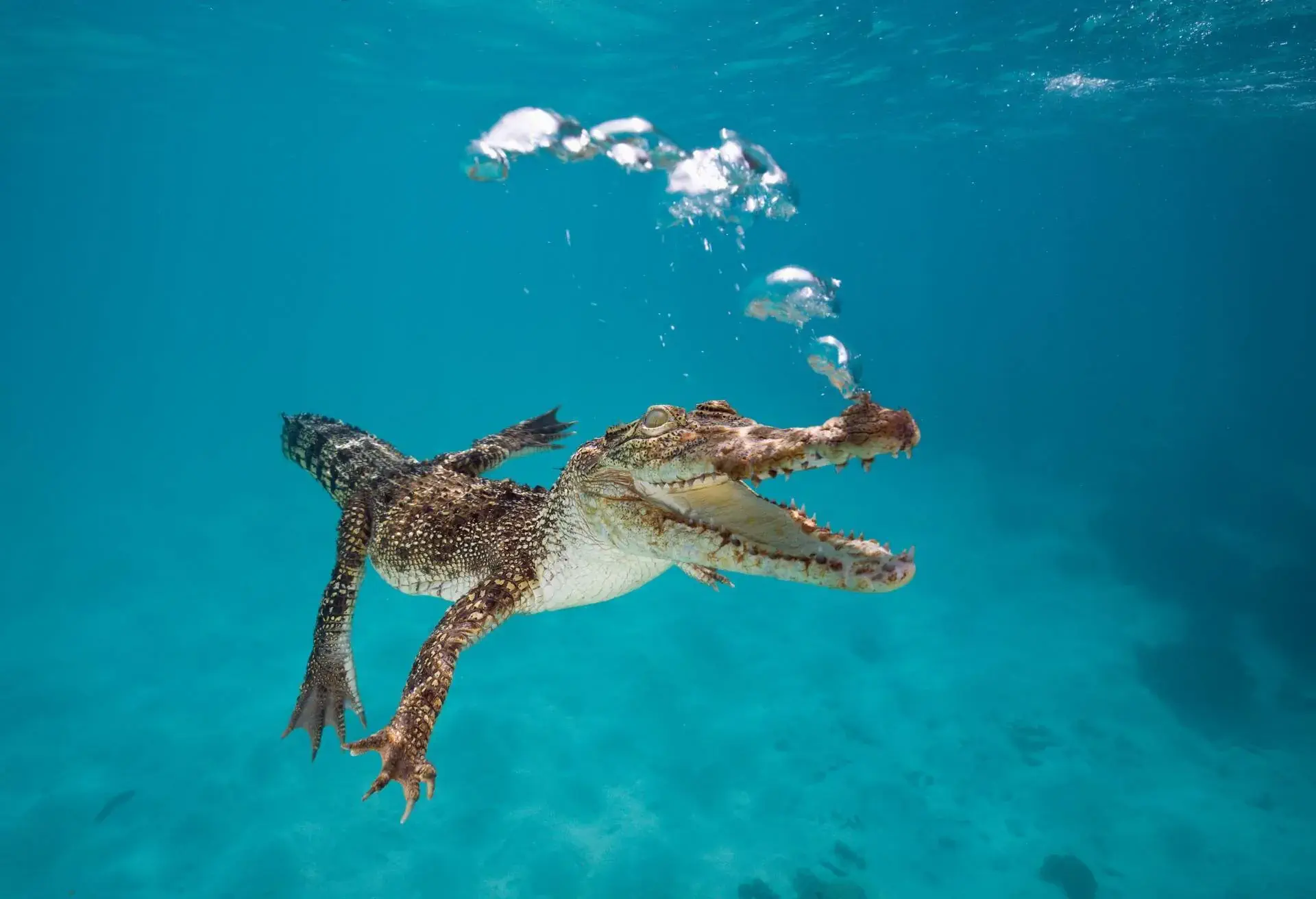
It’s estimated that there are over 100,000 saltwater crocodiles in Australia, mostly found in estuaries, but they have been found in the ocean and freshwater spots occasionally. The typical habitat of these crocs, otherwise known as croc country, starts just south of Gladstone, by the Boyne River, and extends all the way up the remaining east coast of Queensland, though they are sometimes found outside of this habitat. These crocodiles are massive, opportunistic and aggressive and have been known to devour big animals, small animals and even human beings from time to time. Attacks on humans are relatively rare, but caution is required if you’re in croc country and the surrounding areas.
The deadliest attack from these crocodiles is known as a death roll, designed to disorientate their prey. They do this by snatching the animal and dragging it into the water, if the animal (or human) puts up a fight, the crocodiles roll their bodies under the water, confusing and scaring the animal even more. This typically causes the animal to lose its breath, become incredibly confused and stop fighting, which makes it easier to eat them.
Taipan snake
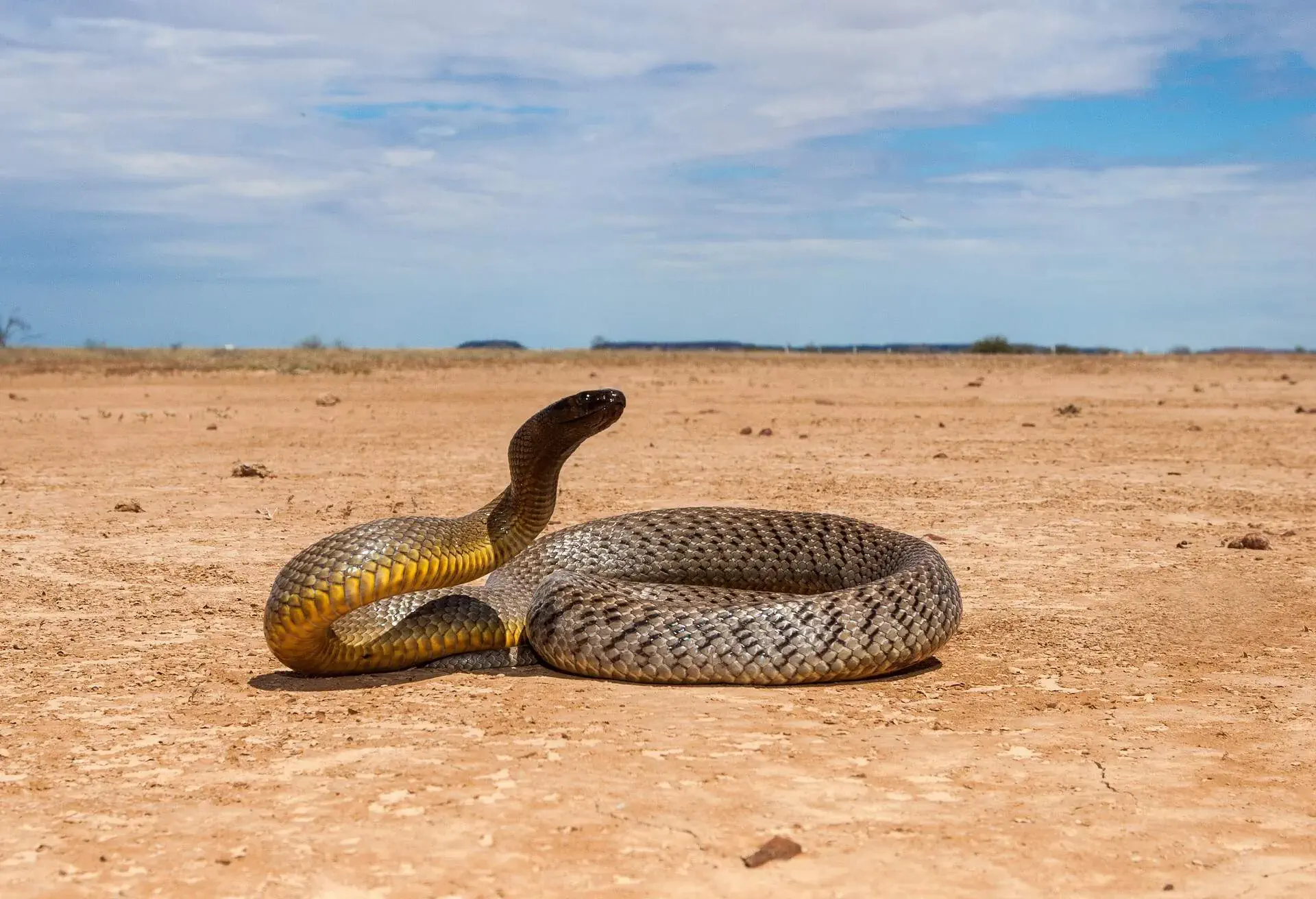
The taipan snake, specifically the inland taipan, is the most poisonous snake on the planet and happens to be one of the many animals that are native to Australia, residing in the desert sands. A single snake’s venom is powerful enough to kill up to 100 men and they hunt warm-blooded mammals, though usually much smaller prey like rats. Despite these snakes being the most venomous, they’re not the deadliest, because they rarely come into contact with humans and no human has died of a bite since 1955, thanks to the anti-venom. The scariest thing about these snakes is the speed at which they strike, known to be one of the fastest attacks; the snake can bite you as many as eight times in a single attack.
There is another, more deadly taipan snake in Australia, known as the coastal taipan. The coastal taipan is considered to be the third most venomous snake in the world but is said to be the deadliest snake in the country because it comes into contact with humans more often than its counterpart. These snakes are typically found along the east coast of Australia from New South Wales through to Queensland and are most active during the early hours of the day, except during hot weather conditions, when they hunt in the evening.
Australian black widow
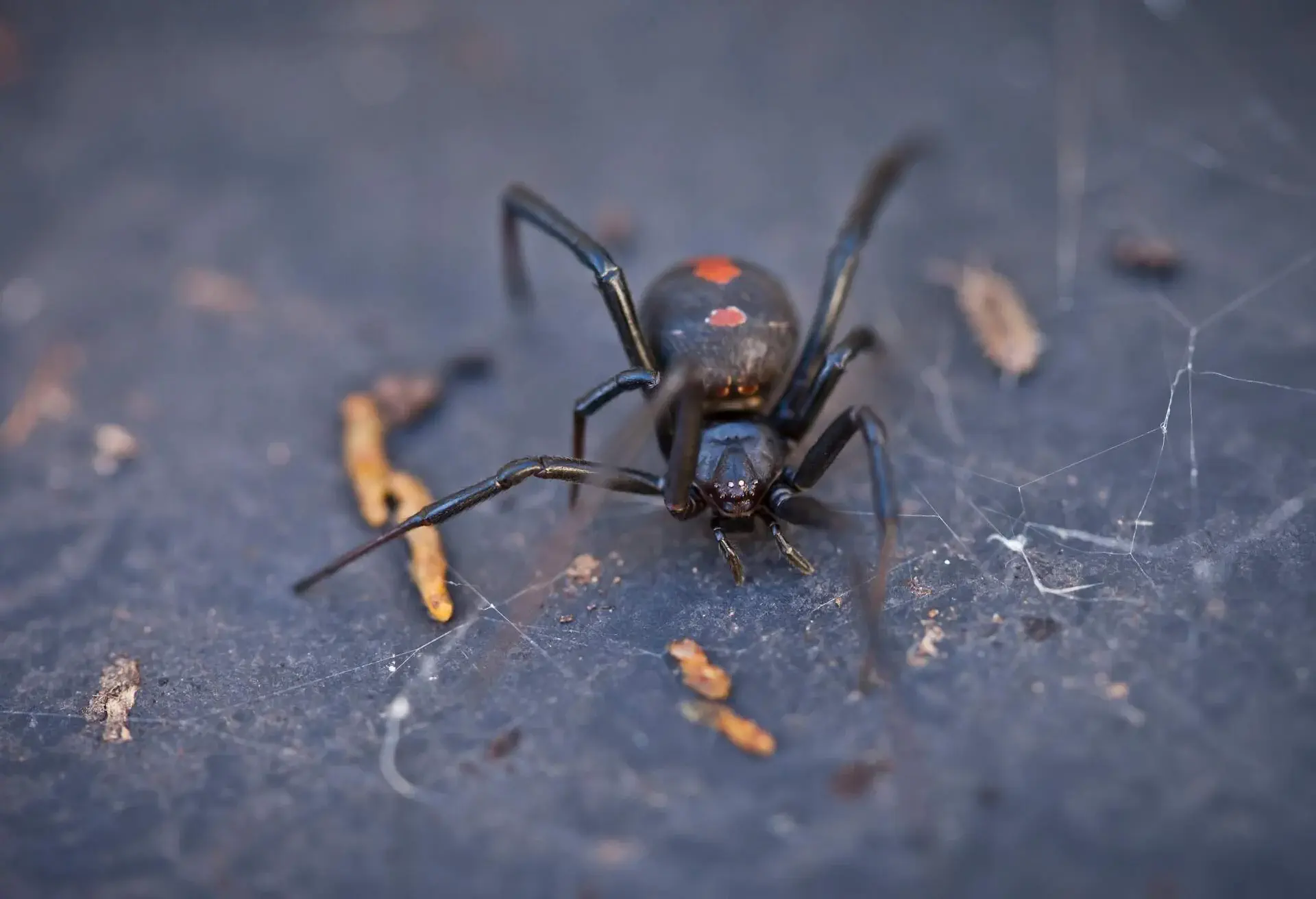
Otherwise known as the redback spider, the Australian black widow is one of the most venomous spiders in the country and can be found throughout Australia. Although death is unlikely thanks to antivenom, which has been available since the late 1950s, it is extremely painful and very risky if you’re far away from any medical attention.
Only the female spider is venomous and is much larger than the male, almost three times the size, and they like to live in warm, sheltered places. It’s rare to encounter a redback spider, because they avoid leaving their webs, and a bite usually only occurs if you end up putting your hand or another part of your body in the web. Still, it’s important to practise caution.
Unique Australian animals
Thanks to the separation of land mass and Australian animals having to adapt to survive, there are some incredibly rare Australian animals. You just have to know where to look to find them.
Wallabies
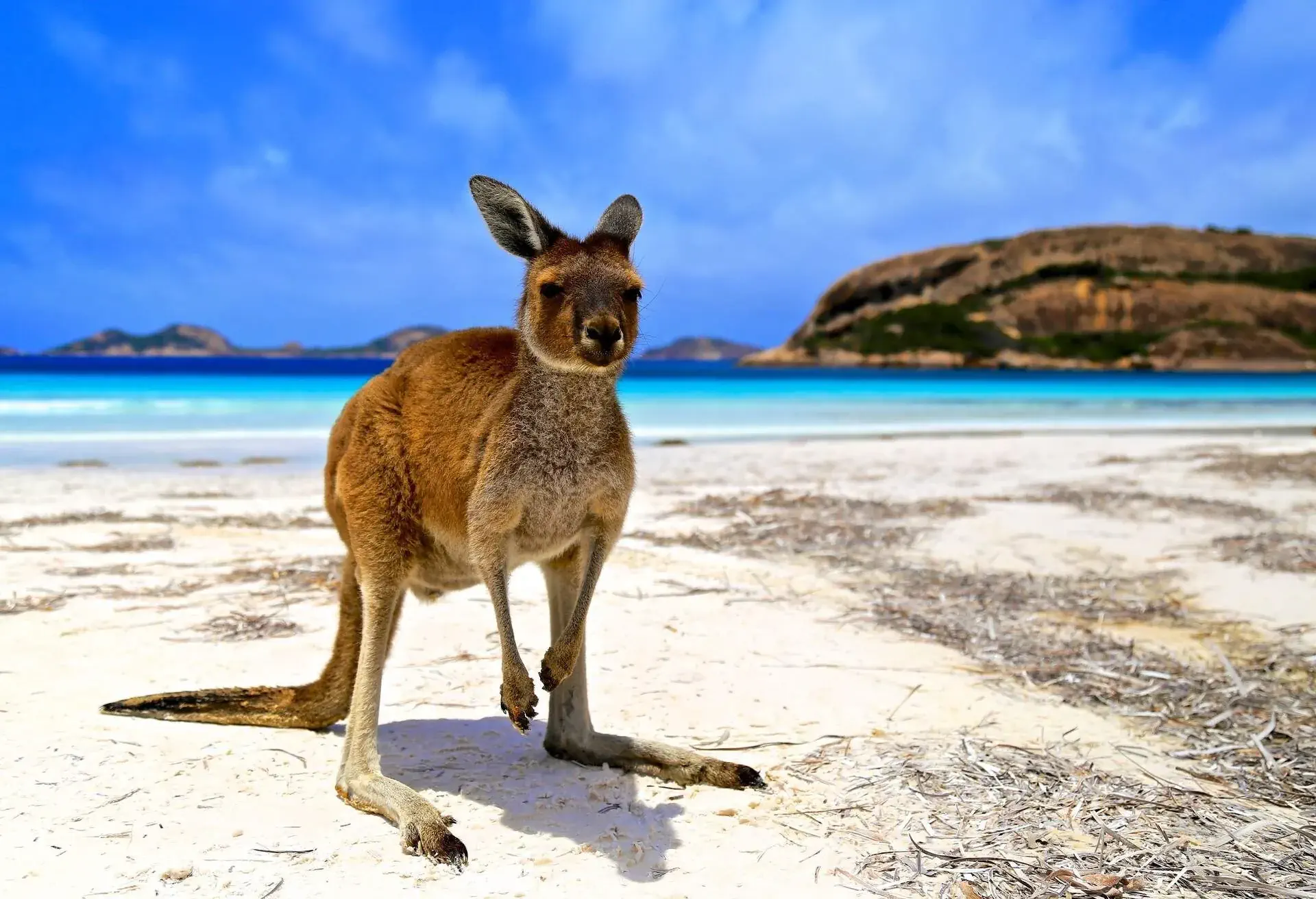
Not to be confused with Australia’s national animal, wallabies are essentially miniature versions of kangaroos and tend to have more compact hind legs, which makes it easier for them to manoeuvre through the forest areas, and they’re typically more colourful than their counterparts. You’re most likely to see these wonderful creatures bounding along the roads outside of the major cities, as well as in Hunter Valley, New South Wales, between the vineyards. Though these incredible animals were once on the verge of extinction, they’re no longer on the endangered list, thanks to the efforts of local sanctuaries and the government.
There are close to 30 different species of wallabies throughout Australia, including shrub wallabies, rock wallabies and brush wallabies. As you can see, they’re grouped by their habitat. The larger wallabies are usually the more social and travel in mobs, or groups if you shy away from likening adorable animals to gangsters. A typical feast for a wallaby includes flowers, moss and ferns, since they’re herbivorous.
Wombats
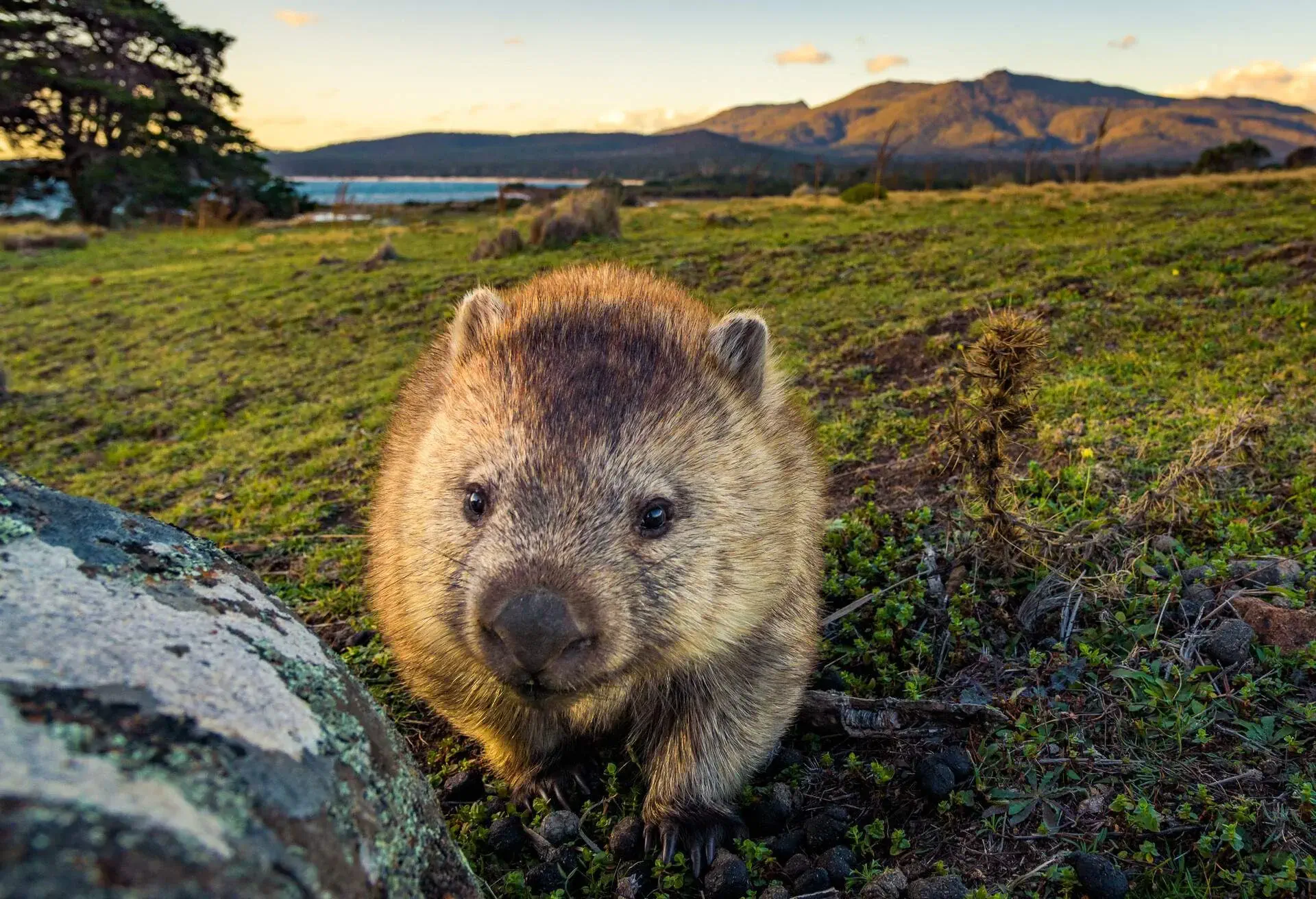
Wombats are one of the cutest animals you’ll ever see, second only to the quokka in my opinion, and look like tiny little bears with the chubbiest cheeks you’ve ever seen. They weigh between 44 and 77 pounds and grow to about 3 feet long. Wombats are one of the many marsupials to roam around Australia, so it has a pouch where their young are nurtured. The wombat pouch faces to the rear though, which helps prevent dirt from getting into the pouch as the wombat burrows.
One of the most defining features of a wombat is external. Their faeces are cube-shaped, thanks to the horizontal ridges in their large intestines. Cradle Mountain in Tasmania and the Blue Mountains outside of Sydney are where you’re most likely to see these creatures, but it’s unlikely you’ll catch a glimpse of them outside of zoos or wildlife parks; they’re nocturnal.
Quokkas
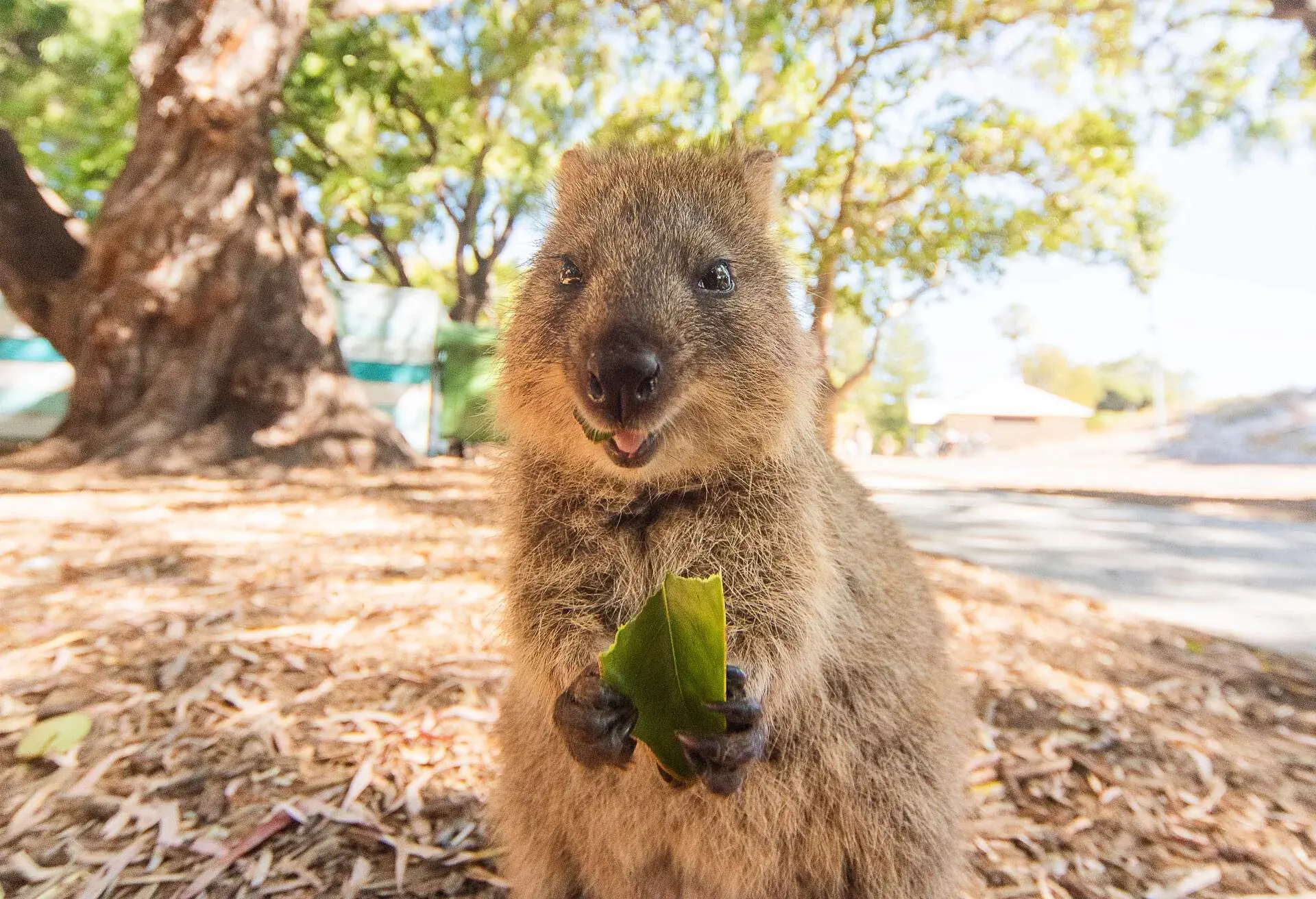
If you want to see the absolute cutest and happiest little animal you’ll ever lay eyes on, you best head on over to Rottnest Island in Western Australia and look out for the tiny little macropod called a quokka. Their tiny little doe eyes and teddy bear ears make them adorable, but it’s their happy nature and smiling faces that make them utterly irresistible.
The coolest thing about the quokka is the way it roams around fearless like it’s just another tourist on a magnificent island. The reason they roam around so carefree is that Rottnest Island isn’t home to any animals that are a predator of the quokka, which means they’ve never learnt to fear anything. They spend their days eating shrubs, leaves and various types of grass and strutting their stuff around the island.
It’s important to note that, despite being so cute and approachable, it’s not advised to feed quokkas human food, and occasional bites have happened.
Platypus
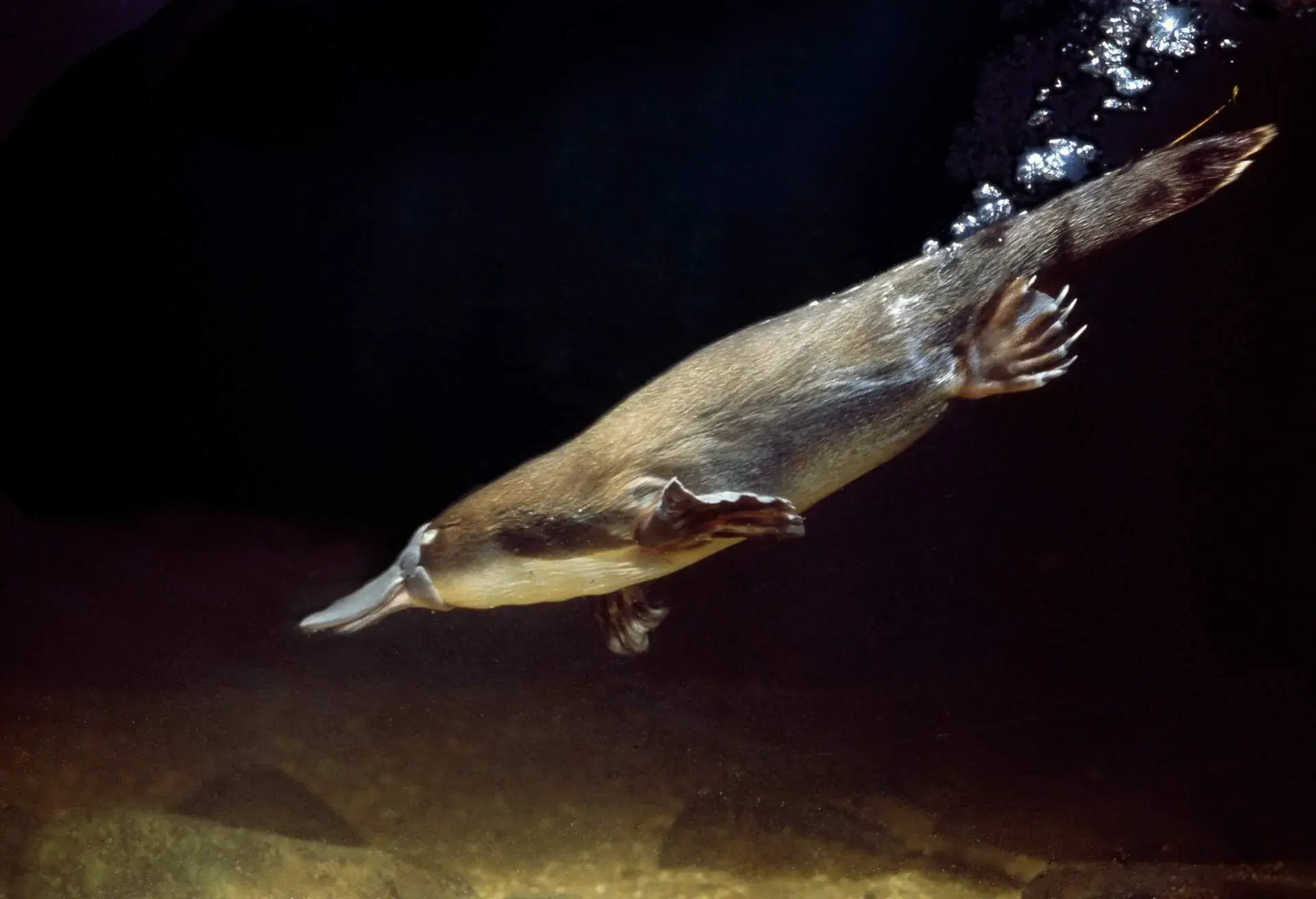
I’ll tell you a little secret; for the longest time, I believed that the platypus was a mythical creature. If I’d never seen one myself, I’d be hard pressed to believe anything else. They look like something out of a storybook, with brown fur that glistens with the water, a long tail, webbed toes for swimming and a bill.
The platypus is a mammal that lays eggs and resembles a combination of an otter and a duck. It’s also venomous and widely considered to be one of the most unusual creatures in the world. You’re most likely to find the platypus along Australia’s east coast riverbanks as well as in Tasmania, if you’re looking for their natural habitat; otherwise, you’ll find them in various sanctuaries like the Taronga Zoo in Sydney, the Koala Sanctuary in Brisbane and the Healesville Sanctuary near Melbourne.
Endangered animals in Australia
Whether looking at Australian desert animals or Australian rainforest animals, there is a selection of endangered creatures in the country that local governments and organisations are working hard to protect, including these guys:
Long-footed potoroo
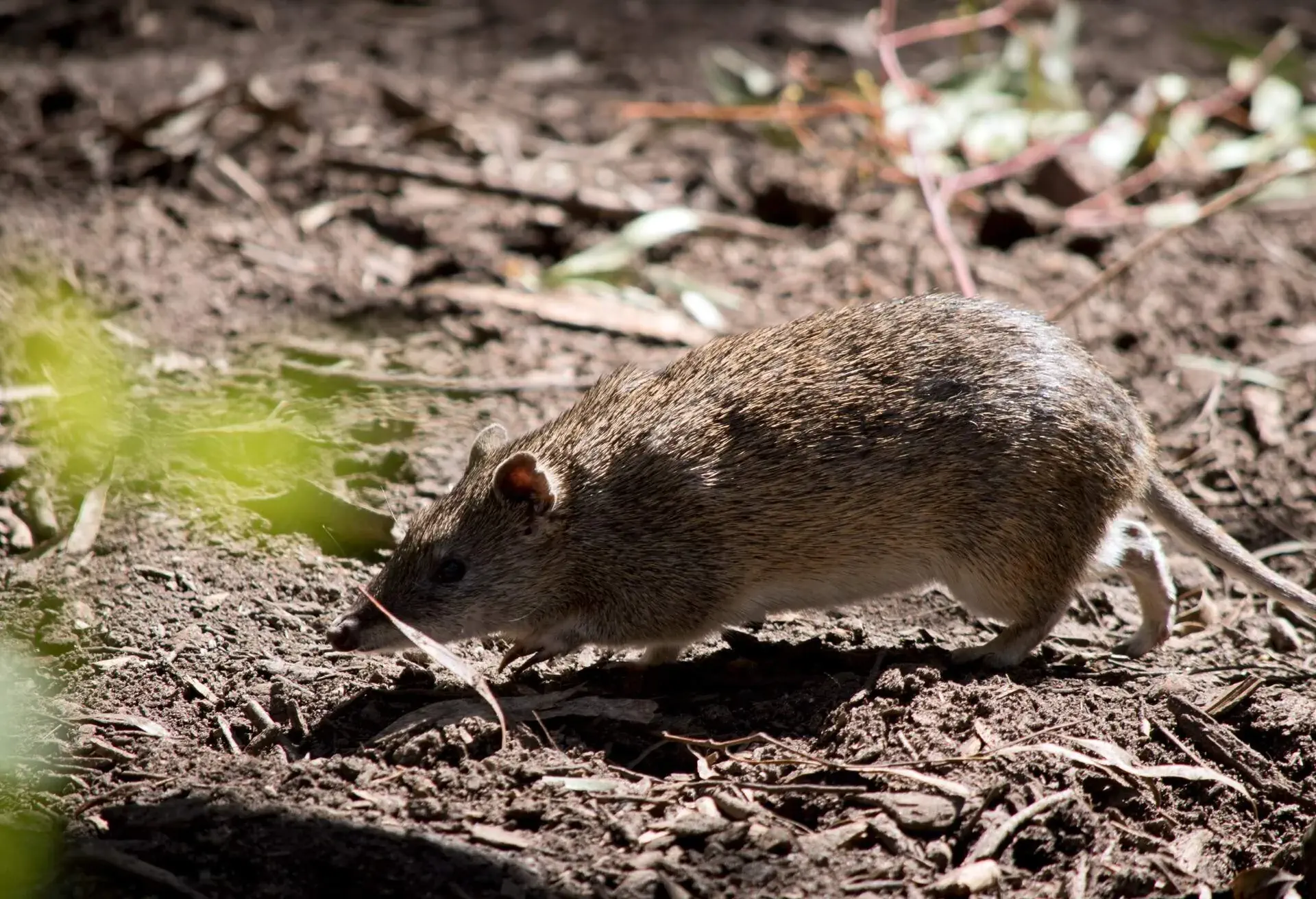
This adorable marsupial is mostly found in southeast Victoria and across the New South Wales border and was badly impacted by the bushfires back in 2019 and 2020, which destroyed a variety of its habitats.
The few surviving long-footed potoroos have played a massive role in the recovery of the damaged areas through the fungi spores dispersed in their droppings, which help to re-establish plant life in the damaged areas. Timbering and different predators also play a role in the dwindling numbers of the long-footed potoroo, of which there are estimated to be only around 2,500 left in the wild.
Greater glider
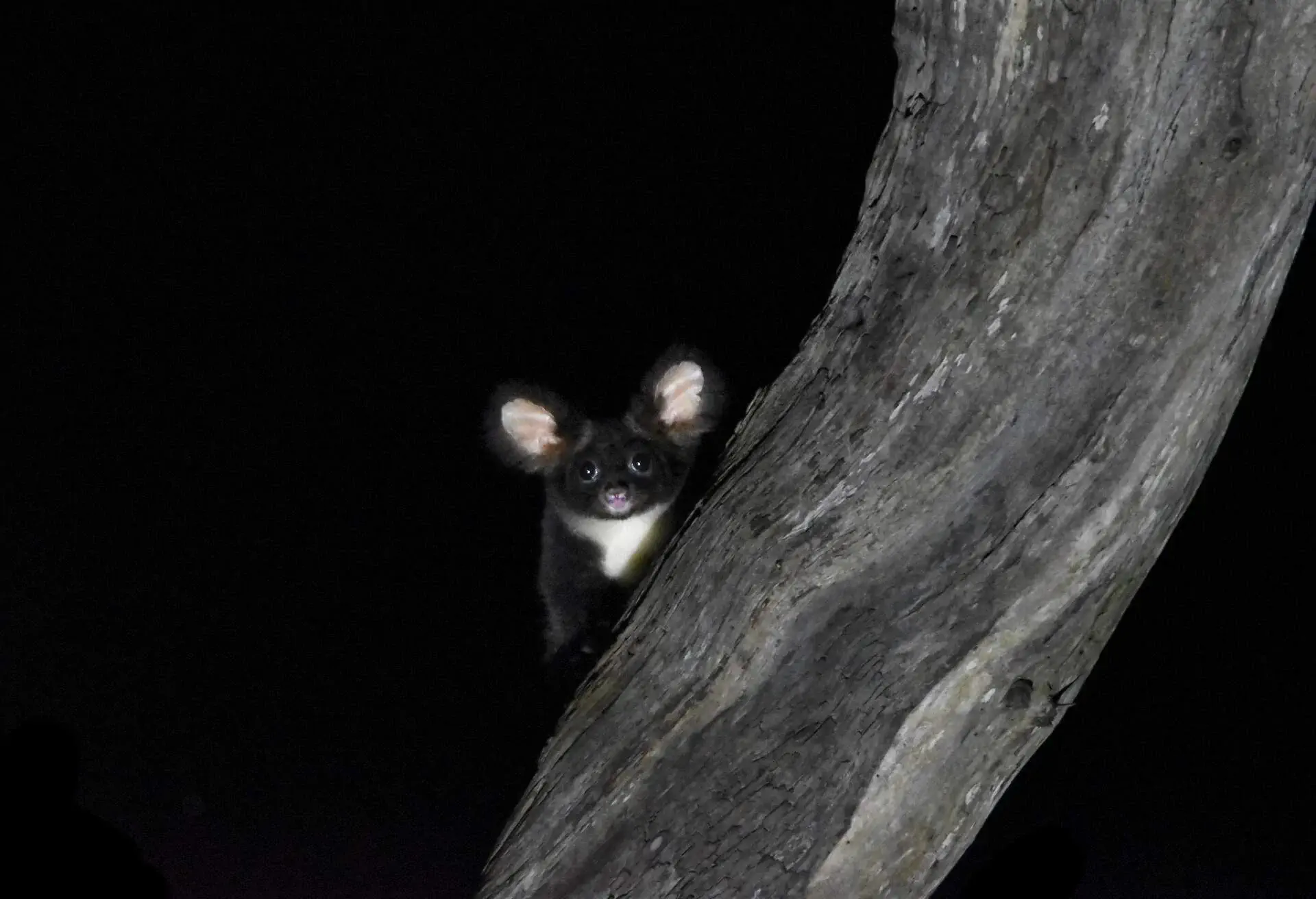
The greater glider is a nocturnal mammal with soft bushy ears and a toy-like tail; it traverses the forest canopy across New South Wales, Queensland and Victoria during the evening and makes its home in hollowed trees during the daytime.
Again, the bushfires, some more recent than 2020, have all but demolished the creatures’ habitats, and in the last 20 years, there has been an 80% drop in population as a direct result of logging. They’re not listed as endangered just yet, but experts expect them to be on the list within the next few years.
Numbat
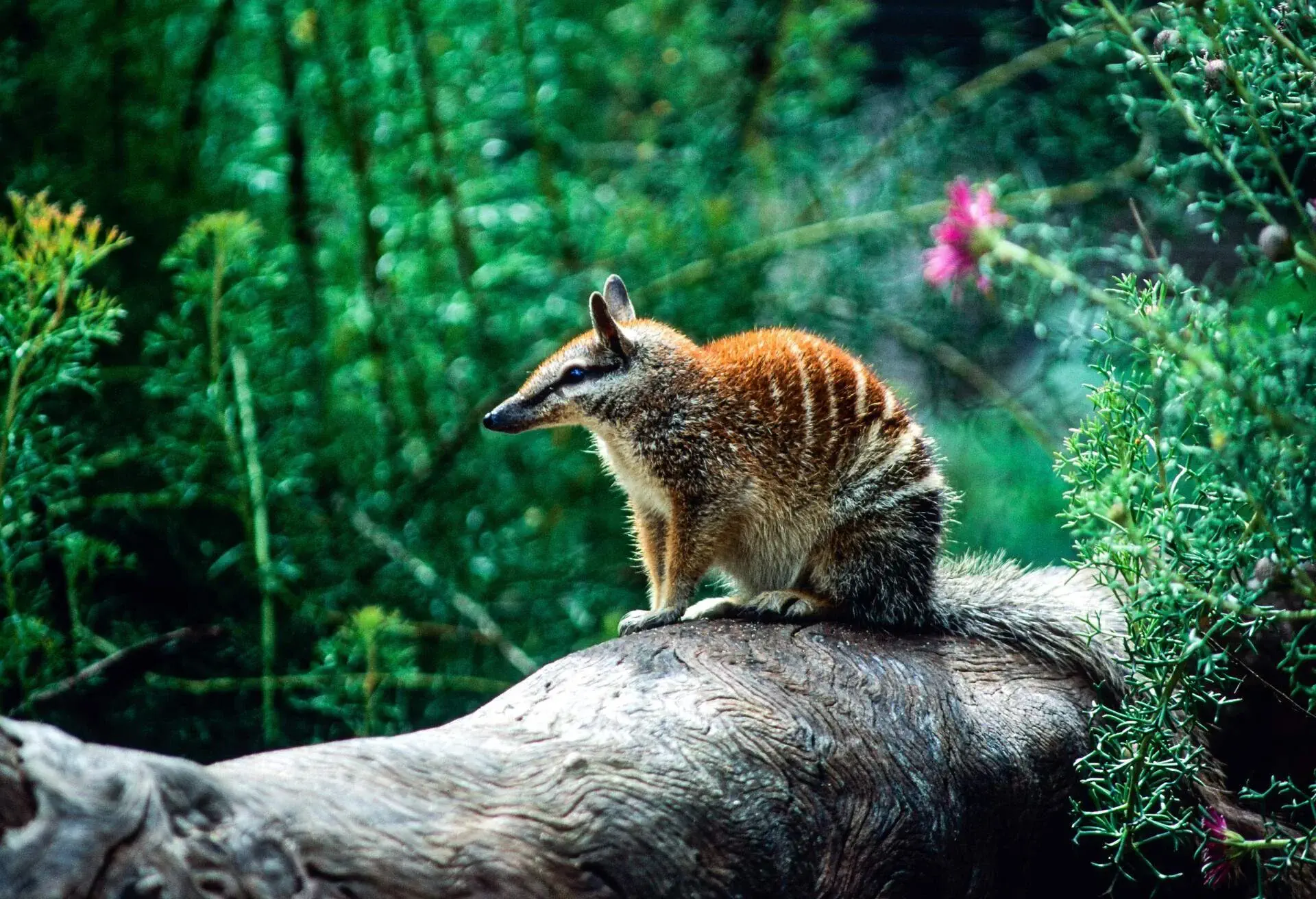
The numbat, also referred to as a banded anteater or walpurti, feeds exclusively on termites and can eat close to 20,000 of them every single day. There are only two naturally occurring populations left in Australia, found in the southwestern part of Western Australia. In contrast, various populations have been introduced into South Australia and New South Wales. It’s estimated that there are only around 1,000 numbats left in the country, and the drop in their population is largely due to habitat loss, land-clearing efforts and predation. There has been a 99% drop in the population of the numbat since the 1970s.
Famous Australian animals
Australia is home to some of the most unique animals in the world, but there are a select few that the country is best known for, here is a couple of them.
Kangaroo
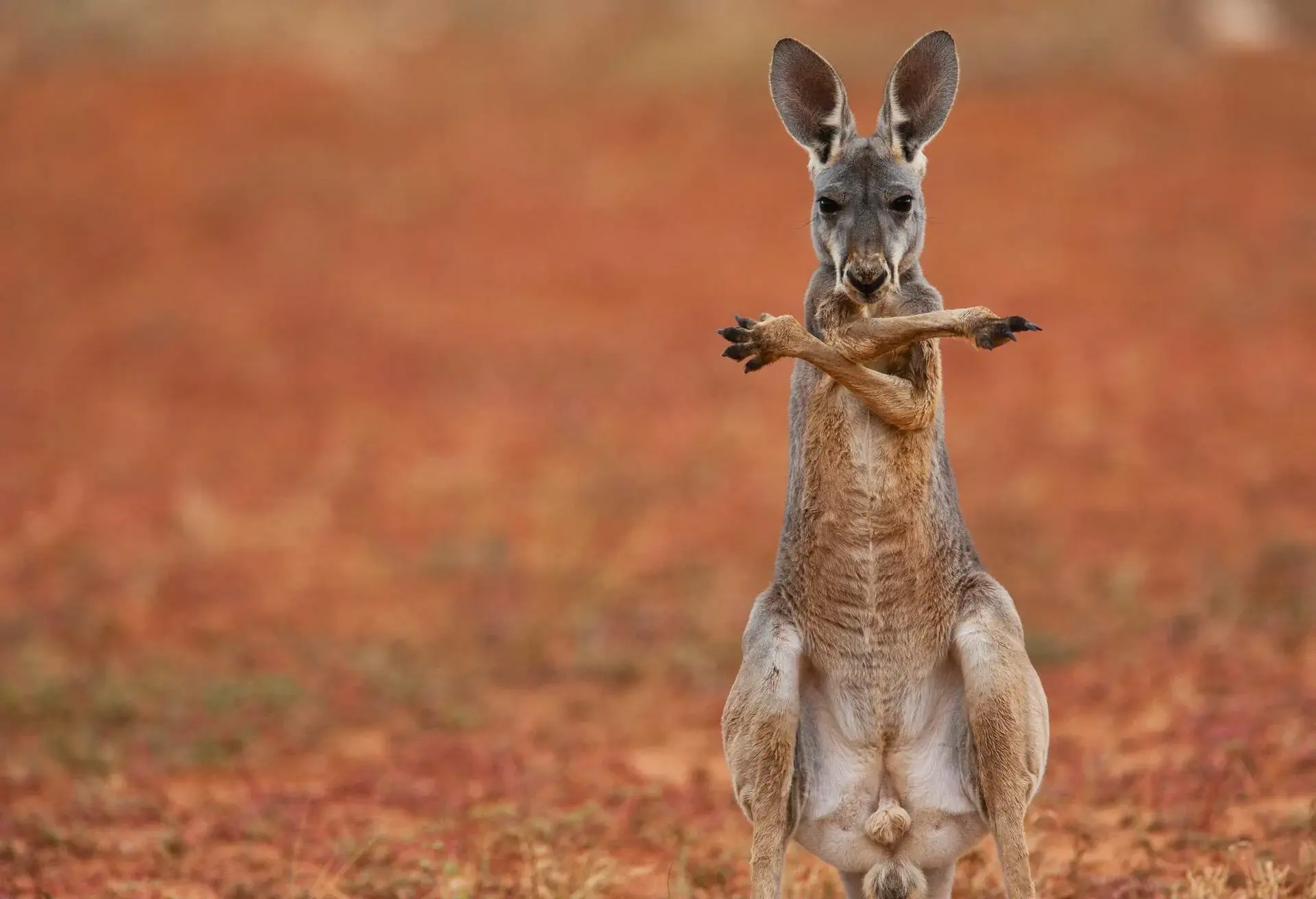
The kangaroo is the national animal of Australia and possibly the most famous animal in the country. There are a variety of types of kangaroos in Australia, including red kangaroos, western grey kangaroos, eastern grey kangaroos, black wallaroos and antilopine kangaroos, and they’re the world’s largest marsupial, with the biggest ones weighing close to 200 pounds and standing almost seven feet tall. You’ll find kangaroos all over the country, but a few of the best places to check them out include Murramarang National Park along the south coast of New South Wales, Bonorong Wildlife Sanctuary in Tasmania and Currumbin Wildlife Sanctuary on Queensland’s Gold Coast.
Koala
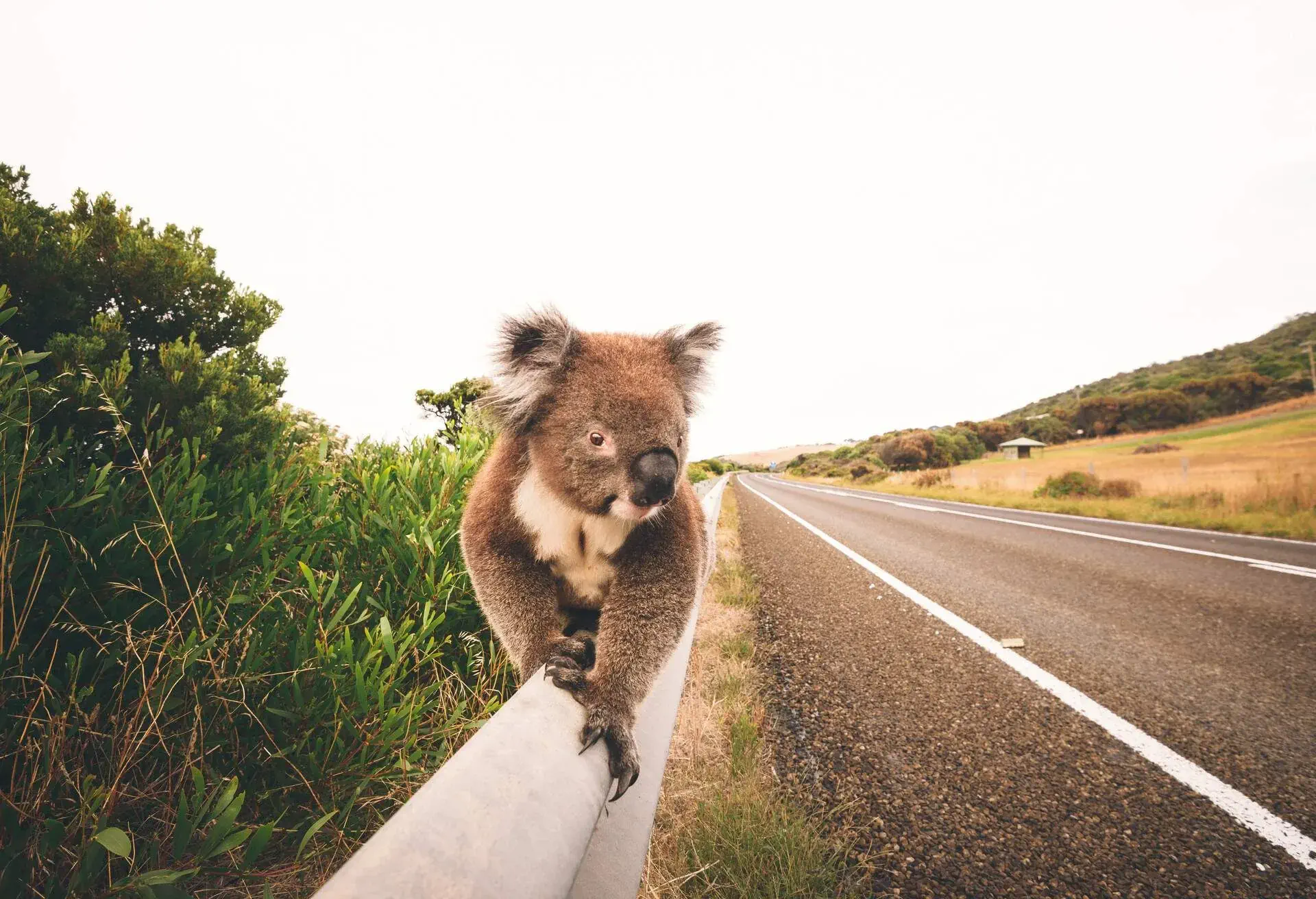
The koala is one of the most iconic animals in Australia, and unbeknownst to many, are marsupials rather than bears as the common international name might suggest. You’ll find koalas in the eucalyptus forests of Eastern Australia, and fully grown koalas can consume as much as two pounds of eucalyptus leaves in a single day. They also won’t eat anything else and are some of the fussiest eaters you’ll ever encounter. Unfortunately, koalas are on the endangered list because of their loss of habitat, which is largely due to land clearing, bushfires and droughts.
Rather than visiting them in their natural habitat, there are various sanctuaries around the country you can visit to have a koala experience, such as Lone Pine Koala Sanctuary in Brisbane, Currumbin Wildlife Sanctuary along the Gold Coast and Kangaroo Island Wildlife Park in South Australia.
Tasmanian devil
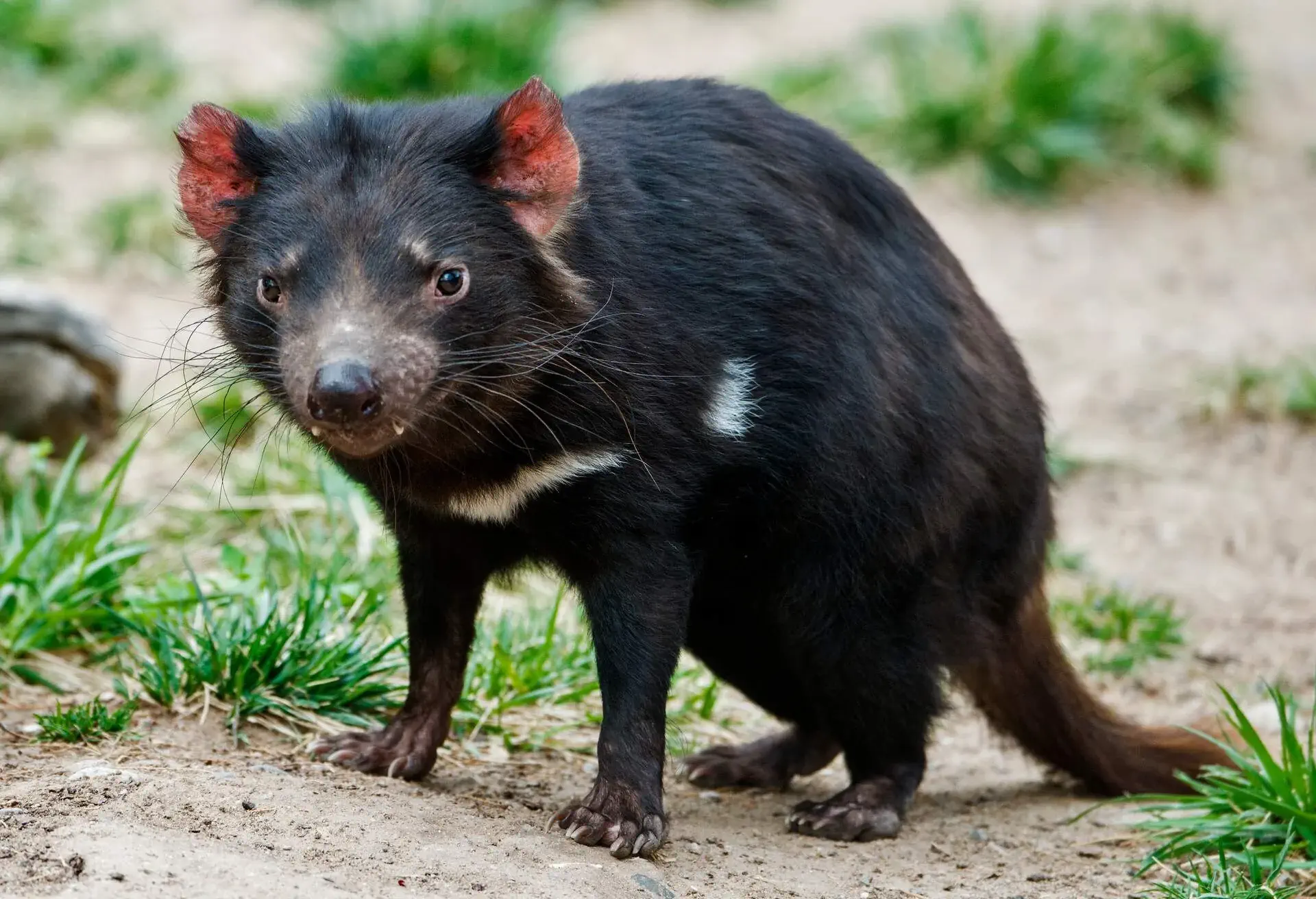
The Tasmanian devil is one of the few and largest surviving carnivorous marsupials in the world. Although they used to be found all over Australia, the subsequent destruction of their natural habitats throughout the country has confined them to the state of Tasmania, where they originate from.
A few fun facts about the Tasmanian devil include having a jaw so powerful it can crush human bones, and they have one of the loudest screams, which once convinced European settlers that they were surrounded by demons in the wilderness. They also store fat in their tails, like all marsupials, and a fat tail is a sign of a well-fed, healthy devil.
Tasmanian Devil Conservation Park in Taranna, Tasman Peninsula, is one of the best places to visit if you want to have an encounter with a Tasmanian devil.
More Australian things
Once you’ve scoured the country checking out all the creatures you can find, there are a couple of other things worth checking out in Australia. Take the time to run through our list of the best places to visit in Australia and plan the perfect getaway. One of the coolest things to do in the country is checking out the various pink lakes, which are formed through an interaction of high salt content and green algae, causing a vibrant pink tinge. If you’re travelling with your family, we also have a list of family holidays worth checking out.

